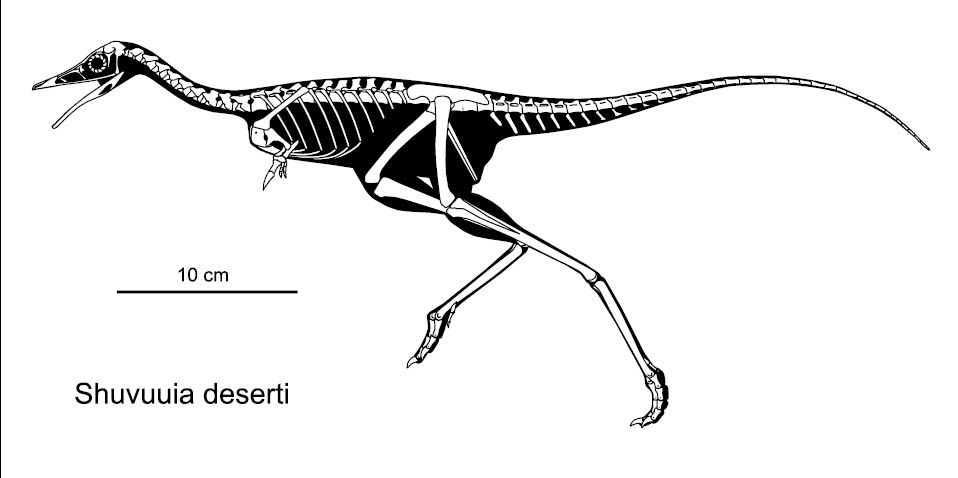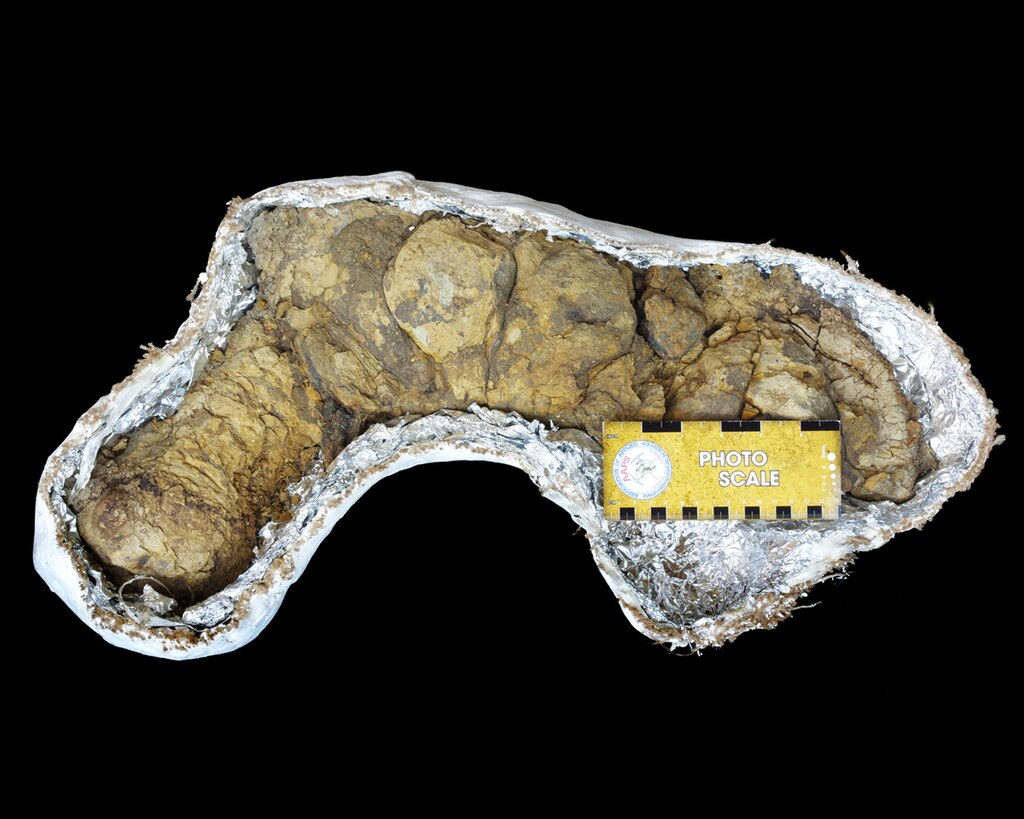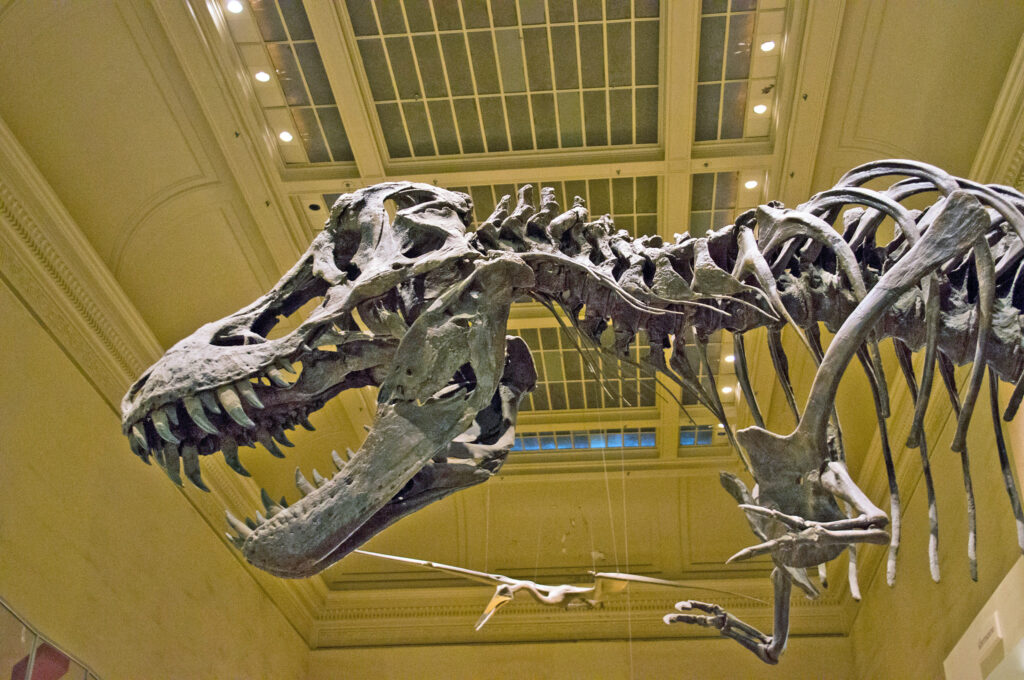In the late Cretaceous period, approximately 75-81 million years ago, a small, peculiar dinosaur scurried through the arid landscapes of what is now Mongolia’s Gobi Desert. This remarkable creature, named Shuvuuia (meaning “bird” in Mongolian), represents one of paleontology’s most fascinating discoveries. Combining seemingly contradictory features—extraordinarily keen night vision like modern owls, paired with digging forelimbs reminiscent of modern moles—Shuvuuia deserticola stands as a testament to evolutionary ingenuity. This chicken-sized alvarezsaurid dinosaur offers us a rare glimpse into specialized nocturnal adaptations in the dinosaur world, challenging our understanding of dinosaur diversity and ecological niches in ancient Mongolia.
Discovery and Taxonomic Classification

Shuvuuia deserticola was first discovered during the joint Polish-Mongolian paleontological expeditions to the Gobi Desert in the 1970s, though it wasn’t formally described until 1998. The holotype specimen was unearthed from the Djadokhta Formation at Ukhaa Tolgod in Mongolia’s Ömnögovi Province, a site renowned for its exceptional fossil preservation. Taxonomically, Shuvuuia belongs to the family Alvarezsauridae, a group of small, bird-like theropod dinosaurs that flourished during the Late Cretaceous period. Initially, there was considerable debate about its classification, with some researchers suggesting it might represent an early bird rather than a non-avian dinosaur. However, subsequent analyses firmly established Shuvuuia as an alvarezsaurid dinosaur, albeit one showing remarkable convergent evolution with certain avian traits, reflecting its position within the broader theropod lineage that eventually gave rise to modern birds.
Physical Characteristics and Size
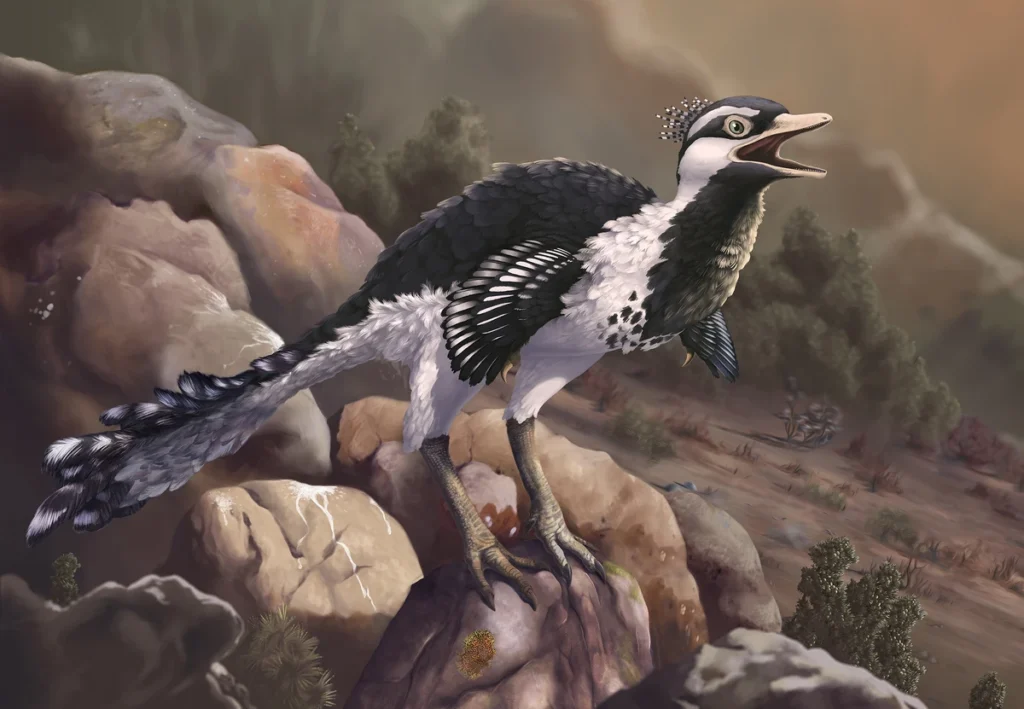
Shuvuuia deserticola was remarkably small by dinosaur standards, measuring approximately 60-70 centimeters (2-2.3 feet) in length and weighing roughly 2-3 kilograms (4.4-6.6 pounds), comparable to a modern chicken. Its body was lightly built and streamlined, adapted for swift movement across the desert landscape. The skull was delicate and elongated, housing relatively large eye sockets that hint at its specialized visual capabilities. Unlike many of its theropod relatives, Shuvuuia possessed a unique dentition pattern with small, peg-like teeth ideal for an insectivorous diet. Perhaps most striking was its bizarre forelimbs—extraordinarily short but powerful, with a single functional digit ending in an enlarged claw, reminiscent of modern digging animals. This distinctive combination of features—lightweight body, specialized skull, and modified forelimbs—speaks to Shuvuuia’s highly adapted lifestyle in the ancient Mongolian ecosystem.
The Revolutionary Eye Adaptations
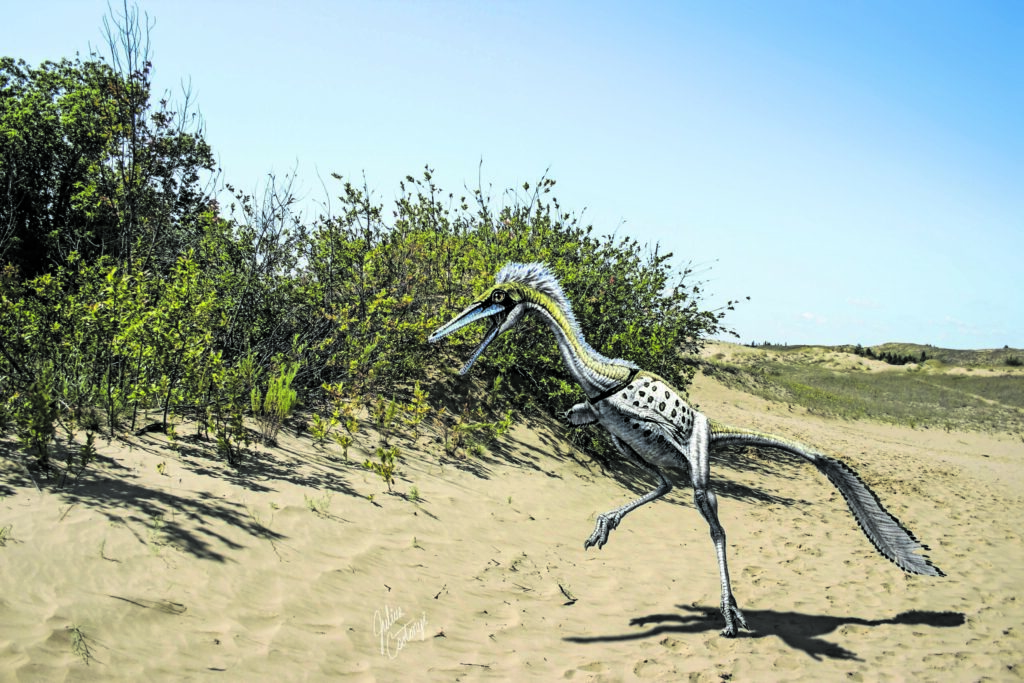
A groundbreaking study published in 2021 in the journal Science revealed that Shuvuuia possessed extraordinary visual adaptations for nocturnal activity. Researchers examining the dinosaur’s scleral rings—bony structures that surround the eye—discovered proportions remarkably similar to those found in modern nocturnal birds, particularly owls. These exceptionally large eyes contained an abundance of rod cells, specialized photoreceptors that excel at gathering light in dim conditions. The eye sockets showed evidence of expanded optic lobes in the brain, further supporting enhanced visual processing capabilities. This represents the strongest evidence to date for specialized night vision in any dinosaur species. Such adaptations would have given Shuvuuia a significant advantage in hunting during nighttime hours when many other predators were inactive, allowing it to exploit an ecological niche unavailable to most of its contemporaries and demonstrating sophisticated sensory specialization previously unrecognized in dinosaurs.
Mole-Like Digging Adaptations
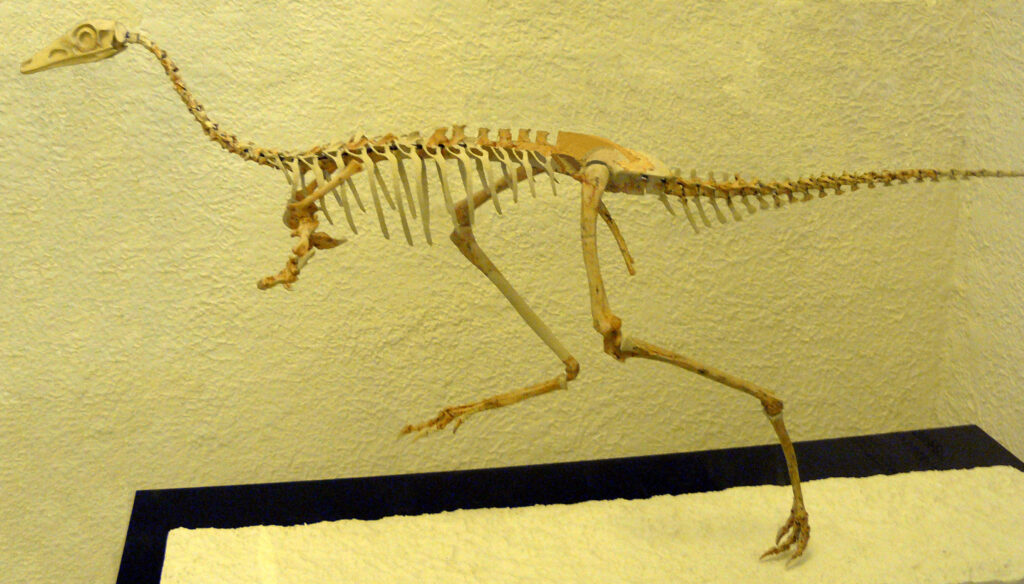
Complementing its remarkable visual system, Shuvuuia evolved forelimbs specialized for digging that bear striking resemblance to those of modern moles and other fossorial (digging) mammals. The arms were unusually short but extraordinarily powerful, featuring robust muscle attachment sites indicating significant digging strength. Most distinctively, Shuvuuia’s hands underwent dramatic modification, with the first digit (equivalent to our thumb) becoming dominant while the other fingers were reduced or lost entirely. This single functional digit terminated in an enlarged, hook-like claw ideal for breaking through soil and insect nests. The shoulder girdle showed specialized adaptations for powerful downward and forward movements, optimized for digging efficiency. These adaptations represent a remarkable case of convergent evolution, where Shuvuuia independently evolved limb structures similar to those seen in modern digging mammals, despite being separated by millions of years of independent evolution and fundamentally different ancestral body plans.
Nocturnal Hunting Behavior
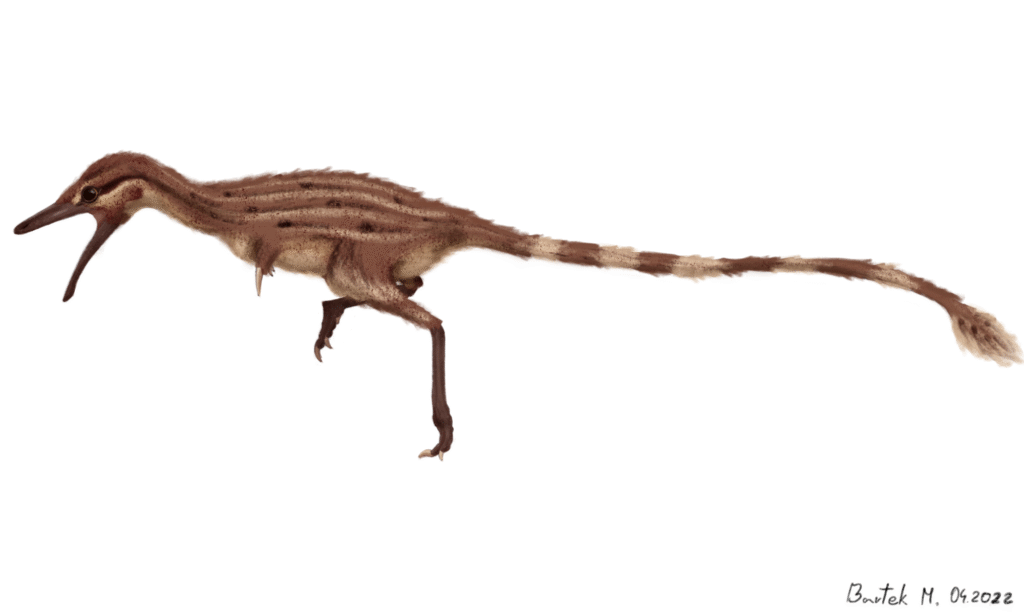
Shuvuuia’s combination of exceptional night vision and specialized digging adaptations paints a compelling picture of its probable hunting behavior. Paleontologists theorize that this unusual dinosaur was primarily active during nighttime hours, when its enhanced visual capabilities provided a significant advantage in locating prey. Its primary hunting strategy likely involved using its powerful forelimbs to dig into the soil or break apart insect nests, particularly targeting termites, ants, and possibly small vertebrates that were active or sheltering during the night. The elongated snout and small, specialized teeth would have been perfect for probing into narrow spaces and extracting small prey. This nocturnal hunting niche would have minimized competition with the numerous diurnal predators that shared its habitat, while also reducing the risk of predation from larger carnivorous dinosaurs that were primarily active during daylight hours. Shuvuuia’s specialized lifestyle represents one of the most distinct ecological adaptations known among non-avian dinosaurs.
Paleoenvironment: The Ancient Gobi Desert
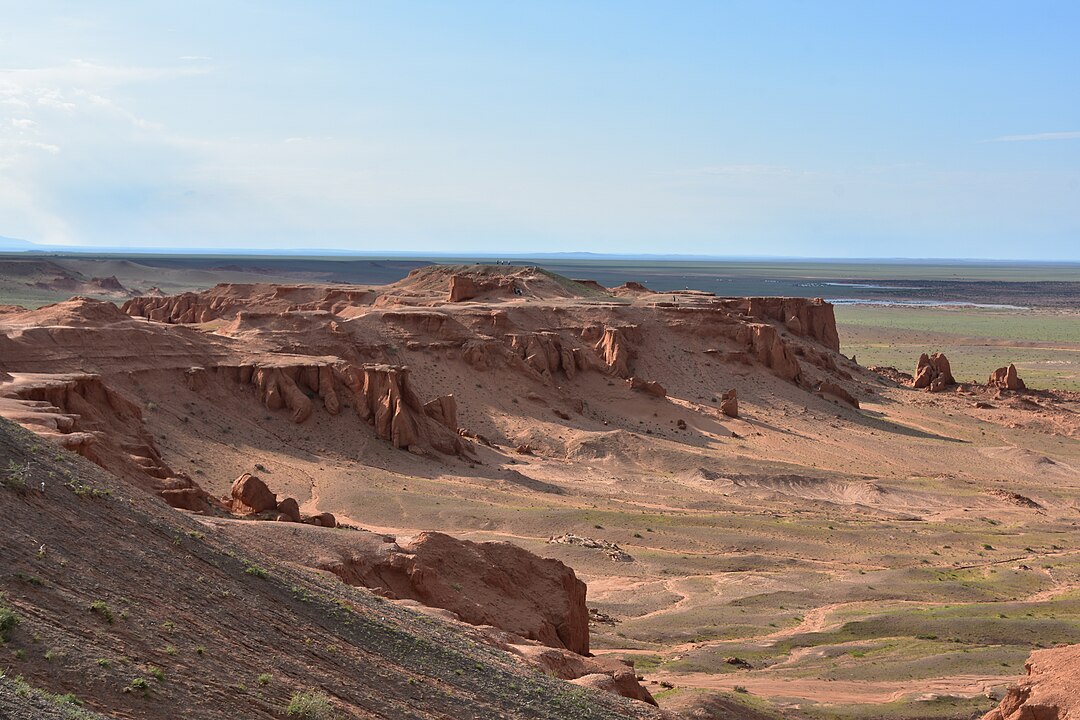
During the Late Cretaceous period when Shuvuuia thrived, the Gobi region was dramatically different from today’s stark desert, though still relatively arid. Paleoenvironmental reconstructions suggest a semi-arid landscape characterized by sand dunes interspersed with oases, seasonal streams, and sparse woodland areas. The climate featured distinct wet and dry seasons, creating a challenging environment that rewarded specialized adaptations. Temperatures likely fluctuated significantly between day and night, potentially driving the evolution of nocturnal habits to avoid daytime heat. The Djadokhta Formation, where Shuvuuia fossils have been discovered, preserves evidence of periodic sandstorms that rapidly buried animals, creating the exceptional preservation conditions that allow paleontologists to study Shuvuuia in such detail. This harsh but diverse ecosystem supported a remarkable variety of dinosaur species, including famous contemporaries like Velociraptor and Protoceratops, indicating a complex food web in which Shuvuuia occupied a specialized insectivorous niche.
Evolutionary Significance Within Alvarezsaurids
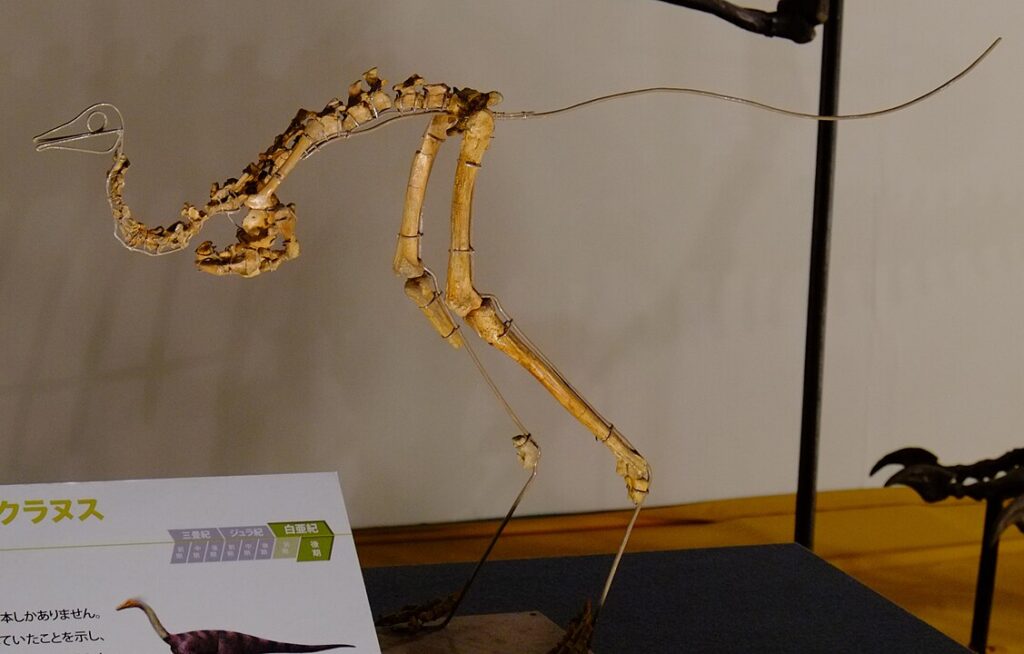
Shuvuuia represents one of the most specialized members of the Alvarezsauridae family, showcasing the remarkable evolutionary plasticity of this dinosaur lineage. Early alvarezsaurids were more generalized small predators, but over millions of years, they developed increasingly specialized features for specific ecological niches. Within this evolutionary context, Shuvuuia stands as perhaps the most extreme example, with its highly derived forelimbs and sensory adaptations representing the culmination of this specialized trajectory. Comparative studies with other alvarezsaurids from different regions, such as Mononykus from Mongolia and Alvarezsaurus from Argentina, reveal a fascinating pattern of progressive specialization within the group. These evolutionary changes reflect a shift from more generalized predatory behavior toward increasingly specialized insectivory, particularly targeting social insects like termites. Shuvuuia’s extreme adaptations demonstrate how dinosaurs could evolve highly specialized body plans to exploit specific ecological niches, challenging earlier views of dinosaurs as relatively inflexible in their evolutionary potential.
Convergent Evolution With Modern Animals
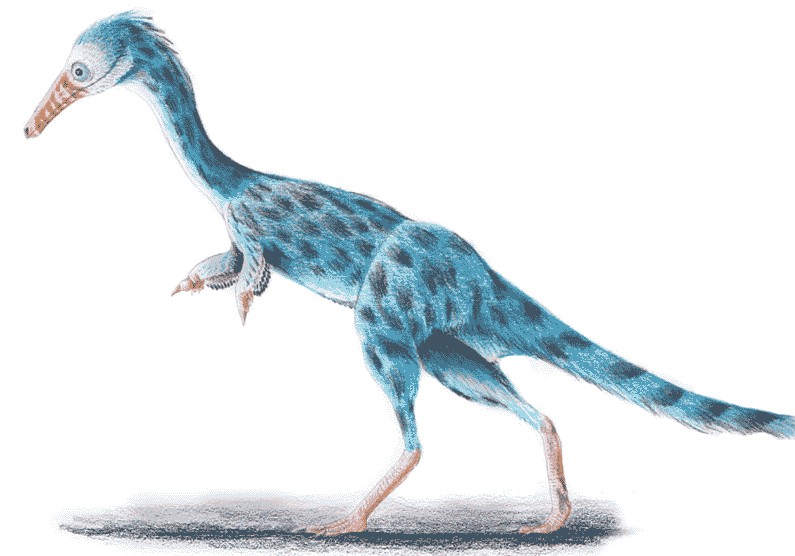
One of the most fascinating aspects of Shuvuuia is how closely its adaptations parallel those of certain modern animals, despite being separated by over 70 million years of evolutionary history. Its visual system shows remarkable convergence with modern owls and other nocturnal birds, with similar proportions of the eye structure and likely similar light-gathering capabilities. Simultaneously, its forelimbs bear striking functional resemblance to modern moles, anteaters, and pangolins—mammals that evolved their digging adaptations completely independently. This phenomenon, known as convergent evolution, occurs when similar environmental pressures lead distantly related organisms to develop comparable solutions. In Shuvuuia’s case, the selective advantages of night vision for nocturnal hunting and powerful digging limbs for accessing buried prey were so significant that evolution produced remarkably similar structures in this dinosaur as it later would in various mammal and bird lineages. Such parallels help paleontologists understand the functional aspects of Shuvuuia’s unusual anatomy by providing living analogs that demonstrate how these adaptations might have worked in practice.
Scientific Debates and Controversies

Since its discovery, Shuvuuia has been at the center of several scientific controversies that have shaped our understanding of dinosaur evolution. Initially, some paleontologists classified it as an early bird rather than a non-avian dinosaur, sparking intense debate about the dinosaur-bird transition. This classification uncertainty stemmed from Shuvuuia’s mosaic of features, some seemingly avian while others were clearly dinosaurian. Another significant controversy surrounded the interpretation of its bizarre forelimbs, with early hypotheses suggesting they might have been used for breaking into insect nests, while others proposed they were adaptations for digging burrows or even specialized for climbing. The 2021 discovery of its nocturnal adaptations sparked additional debate about the prevalence of nocturnality among dinosaurs, challenging the traditional view that dinosaurs were predominantly diurnal animals. These ongoing scientific discussions highlight Shuvuuia’s importance as a case study in dinosaur specialization and illustrate how new analytical techniques continue to reveal unexpected aspects of dinosaur biology that force reconsideration of long-held assumptions.
Fossil Preservation and Research Challenges
The study of Shuvuuia presents unique challenges that have both hindered and enhanced our understanding of this unusual dinosaur. The exceptional preservation conditions of the Gobi Desert, particularly the Djadokhta Formation, have yielded remarkably complete specimens with preserved details rarely seen in dinosaur fossils, including impressions of soft tissues and minute skeletal elements. However, Shuvuuia fossils remain relatively rare, with only a handful of specimens discovered to date, limiting sample sizes for comprehensive studies. The delicate nature of Shuvuuia’s skeleton presents significant challenges during excavation and preparation, requiring specialized techniques to prevent damage to crucial anatomical features. Research is further complicated by the remote locations of fossil sites in Mongolia’s Gobi Desert, where logistical challenges and harsh conditions restrict field seasons and exploration. Despite these obstacles, new imaging technologies and analytical methods continue to yield fresh insights from existing specimens, demonstrating that even well-studied fossils can reveal new information when examined with innovative approaches.
Significance for Understanding Dinosaur Sensory Capabilities
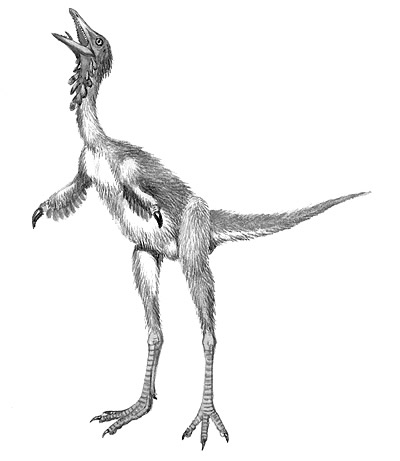
Shuvuuia has fundamentally transformed our understanding of sensory capabilities in dinosaurs, particularly regarding vision and possible behavioral adaptations. Before the discovery of its nocturnal adaptations, paleontologists generally assumed that most small theropod dinosaurs were primarily diurnal hunters relying on vision in daylight conditions. The identification of specialized night vision in Shuvuuia opened the possibility that nocturnality might have been more widespread among dinosaurs than previously recognized, prompting reassessment of other species. This discovery has inspired new research methodologies for detecting sensory adaptations in fossil animals, including comparative studies of scleral ring dimensions and eye socket proportions across dinosaur groups. Beyond vision, Shuvuuia’s elongated snout suggests enhanced olfactory capabilities that may have complemented its visual adaptations during nocturnal foraging. These insights contribute to a more nuanced understanding of dinosaur sensory ecology and behavior, moving beyond skeletal reconstructions to consider how these animals perceived and interacted with their environments—an area of paleontology that bridges anatomy with behavioral ecology.
Cultural Impact and Public Fascination
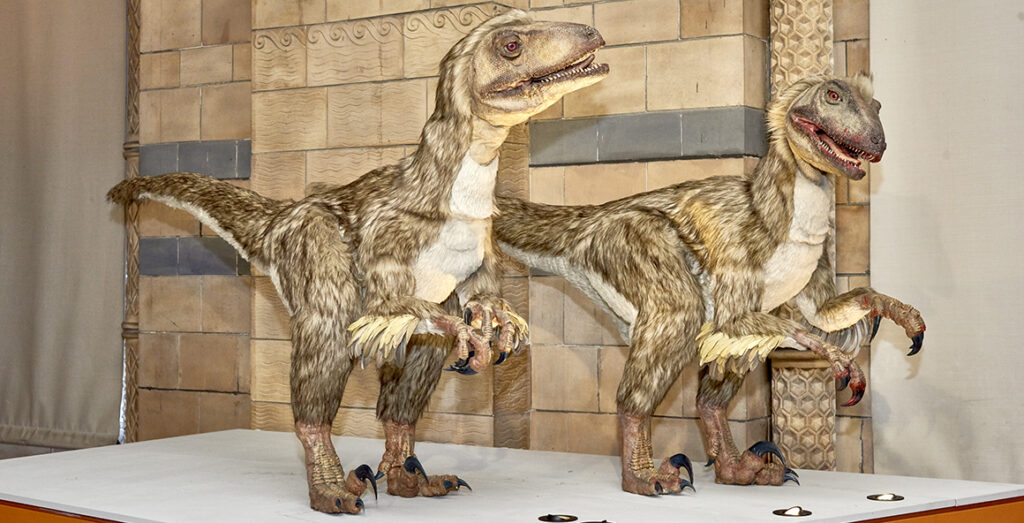
Despite being less well-known than dinosaur celebrities like Tyrannosaurus or Velociraptor, Shuvuuia has steadily gained cultural significance as its remarkable adaptations have come to light. The 2021 publication revealing its nocturnal capabilities generated significant media attention, with headlines highlighting the “owl-eyed, mole-handed” dinosaur that challenged conventional views. Museum exhibitions featuring Shuvuuia have increasingly emphasized its unique adaptations through interactive displays that compare its visual capabilities to modern nocturnal animals. Popular science books and documentaries now regularly feature Shuvuuia as a prime example of the unexpected diversity of dinosaur adaptations, using it to counter outdated perceptions of dinosaurs as evolutionary “dead ends” or inflexible giants. For the Mongolian public, Shuvuuia holds special cultural significance as a uniquely Mongolian dinosaur, becoming a source of national scientific pride and featuring in educational materials throughout the country. This growing public recognition reflects how single, well-studied specimens can dramatically influence our collective understanding and appreciation of prehistoric life.
Future Research Directions
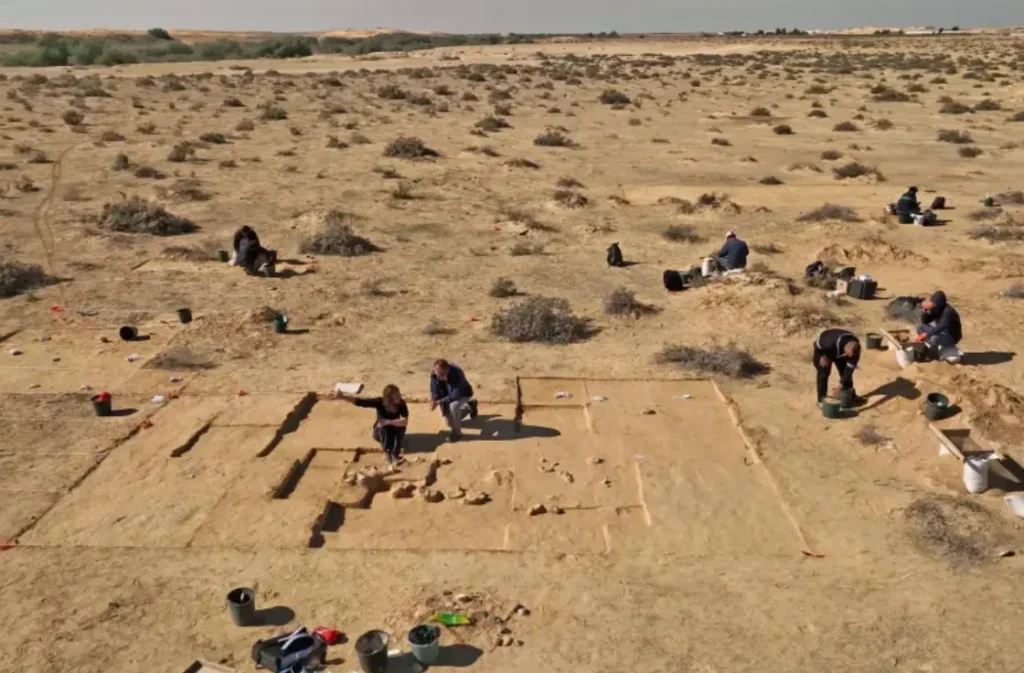
Ongoing and future research on Shuvuuia promises to yield even deeper insights into this remarkable dinosaur’s biology and ecology. Current research trajectories include biomechanical modeling of its digging capabilities, using engineering principles to quantify the force and efficiency of its specialized forelimbs. Advanced scanning and imaging technologies are being applied to examine minute details of brain structure from cranial endocasts, potentially revealing more about its sensory processing capabilities and behavior. Geochemical analyses of fossil bones may provide clues about its diet and habitat preferences through stable isotope signatures. Paleontologists are actively searching for additional specimens in Mongolia’s Gobi Desert, particularly targeting sediments representing different microhabitats to better understand Shuvuuia’s environmental preferences and geographical range. Perhaps most excitingly, developing techniques in ancient DNA and protein recovery, though currently limited to much younger specimens, may eventually extend far enough back in time to reveal molecular details of Shuvuuia and its relatives, potentially including information about coloration, soft tissue structures, and more precise evolutionary relationships.
Conclusion
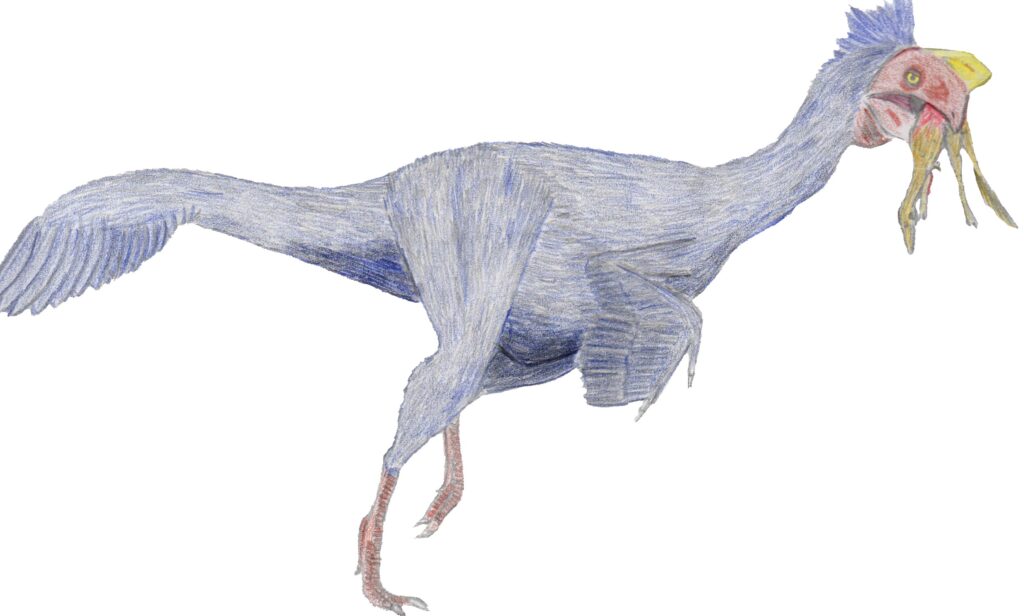
Shuvuuia deserticola stands as one of paleontology’s most remarkable discoveries—a dinosaur that defies stereotypes and reveals the extraordinary diversity that existed within the dinosaur lineage. Its combination of owl-like night vision and mole-like digging adaptations demonstrates how evolution crafted specialized solutions to the challenges of survival in the ancient Mongolian ecosystem. As research techniques continue to advance, this small but extraordinary dinosaur will undoubtedly yield further insights into the complexity of dinosaur sensory capabilities, behavior, and ecological specialization. In many ways, Shuvuuia represents the frontier of modern paleontology—where traditional fossil study meets cutting-edge analytical approaches to reveal not just the bones of ancient creatures, but how they lived, perceived their world, and thrived in environments long vanished from Earth.


